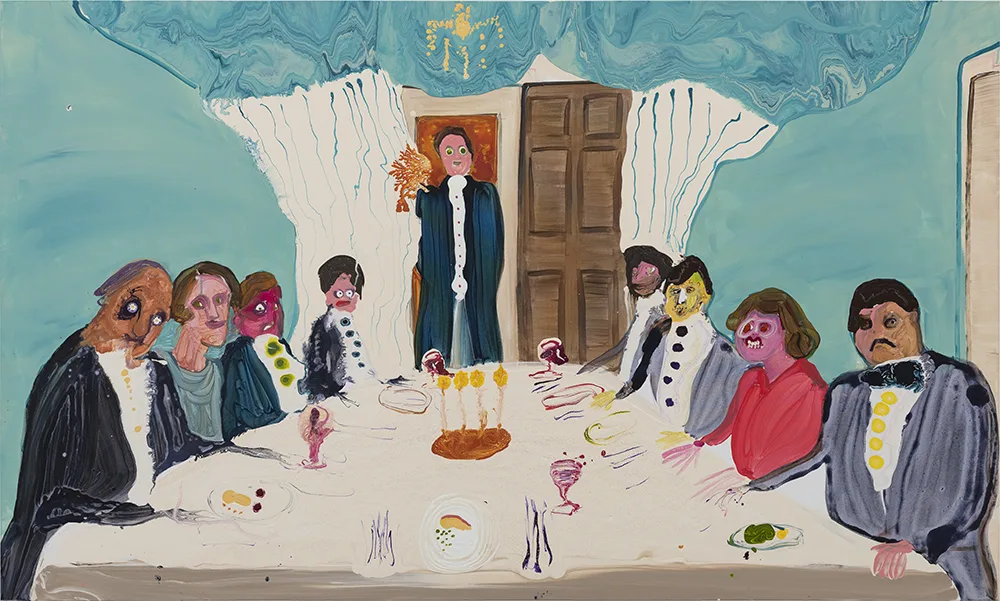
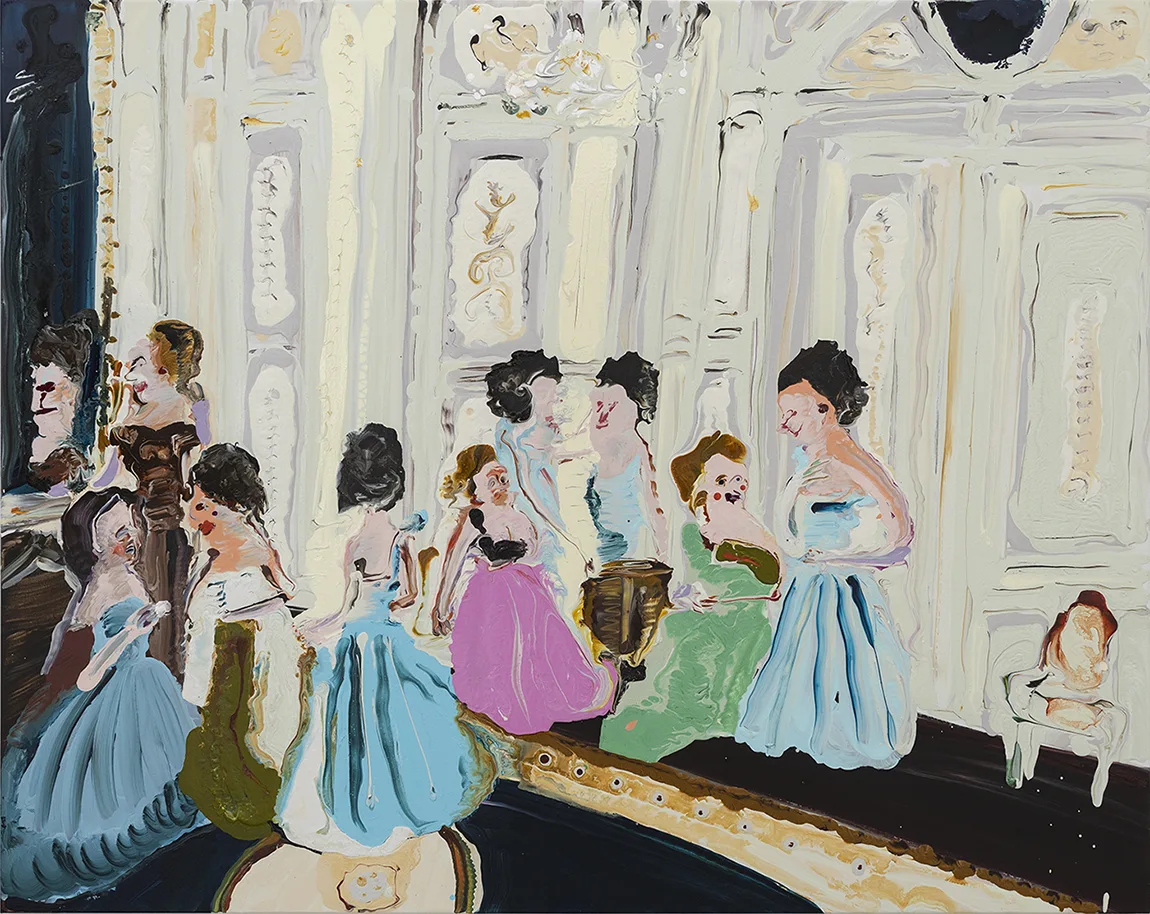
Irish Painter Genieve Figgis loves to look at the luxury and ceremony of the high society of the past, from the high-ceilinged halls to the debutante balls. As much as she loves the aesthetic, though, she’s well aware of the era’s imperfections, especially its attitudes towards women. She recreates these splendid scenes in her work, but makes them more inclusive and democratic than they ever would have been in reality.
Words by Gemma Tipton. Images courtesy of Almine Rech Gallery.
Do the imaginary friends of our childhood ever truly evaporate from our minds? Or do they linger, waiting for when, even as adults, we may call upon their company again? Genieve Figgis has been getting reacquainted with hers via her most recent series of paintings. She paints them enjoying dinner parties in halls full of high fashion or attending picnics in sumptuous parks, and each painting lures you in. All the while, the scenes hold space for the Irish artist’s fascination with what lies behind our public façades.

It is a fascination that has struck a major chord amongst curators, leading to exhibitions around the world, and standout inclusions in group shows, such as the Irish Museum of Modern Art’s immersive survey of Desire in 2020. Genieve’s work also includes references to her own trio of heroes: Francisco Goya, Diego Velázquez and Hans Holbein, where the sitters and subjects are posed and clothed to show off their wealth and power. “I love the faces and costumes staring back from another time and place,” she says. “They seem to be from another world and yet only a few hundred years separate us. It’s interesting to wonder what we can learn from history.”
What we’re seeing on her canvases is the result of a conversation between the artist and her acrylics, which can become quite spirited at times. Genieve thins her paint so that it runs, as she enjoys an element of serendipity in her process, rather than the fixed outcomes of thicker paint. “I enjoy using acrylic because it just needs water,” Genieve explains. “I have worked in the past with oils and I enjoy the material, but because I like to thin the paints down a lot I would rather use water than excessive quantities of turpentine and spirits. I like how acrylic feels to work with, how it looks when it’s wet, and how anything is possible when working with a material that battles with me.” This makes painting a challenge to be enjoyed. It’s something, she says, “that I need to work out step by step, like a giant liquid puzzle.”
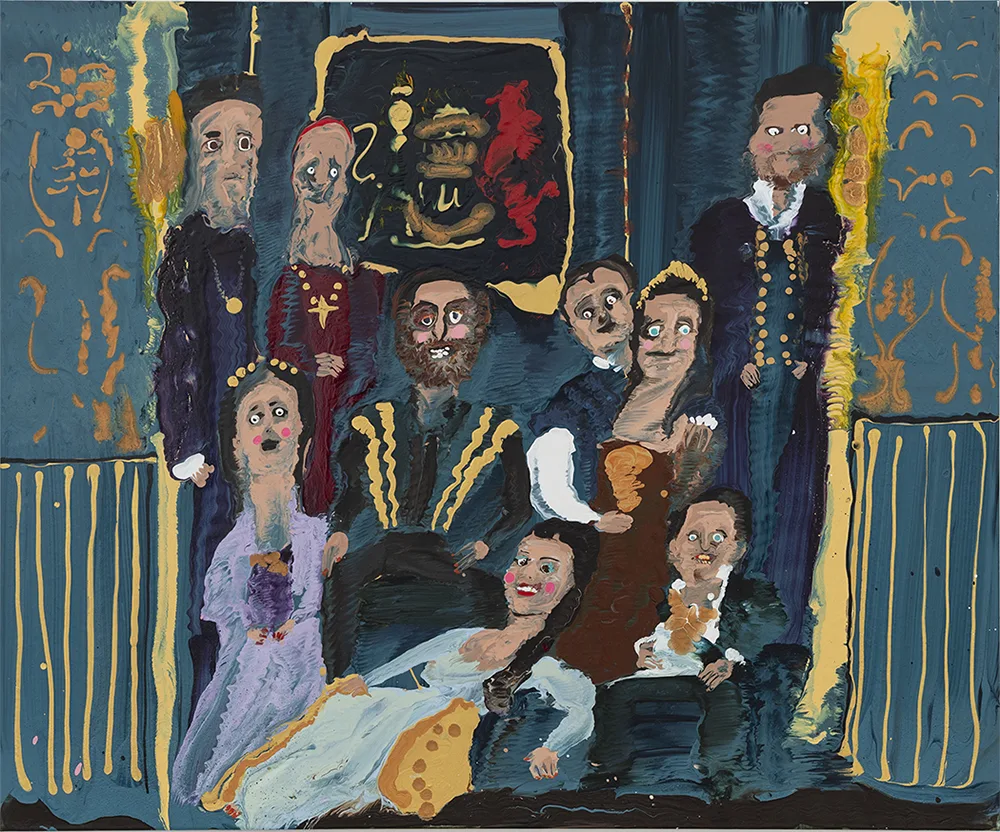

They seem to be from another world and yet only a few hundred years separate us.
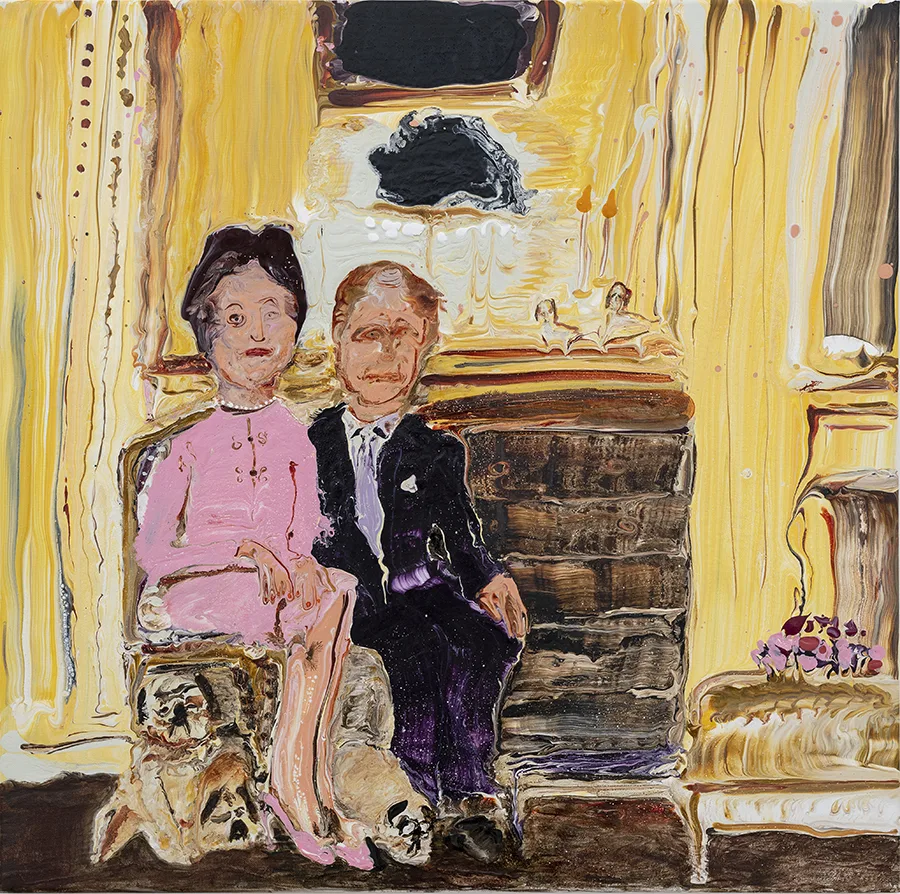
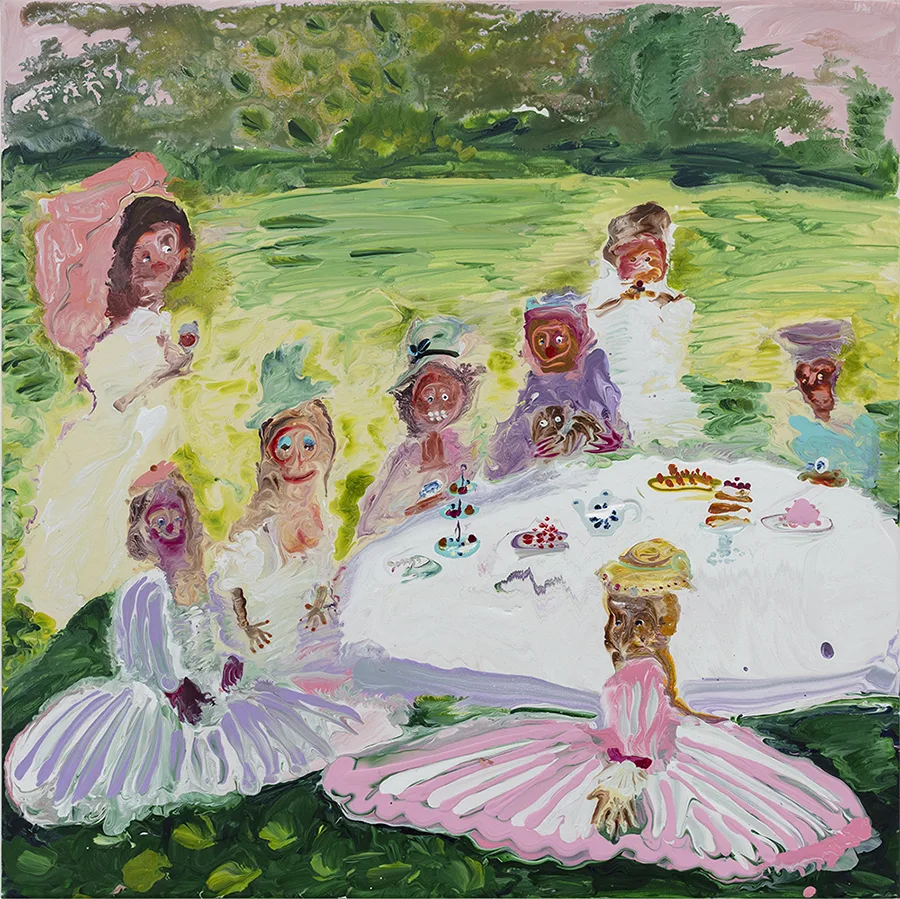
The feeling and fluidity of paint allows the artist to tap into these rich veins in her own psyche. “Often the paint decides what to do,” she says. “The process of being in a state of continuous unconsciousness allows me to make choices that are my own unrestrained thought. The figures are in a constant state of flux and they are limitless.
I don’t know if I could honestly say that I have conversations with the figures but they sometimes cheer me up. I always attempt to make them beautiful and to create something that is attractive to look at,” Genieve continues, adding that the freedom of not having to please a sitter allows another sort of presence to emerge, one that is, “freed from obligations to society and its expectations.”
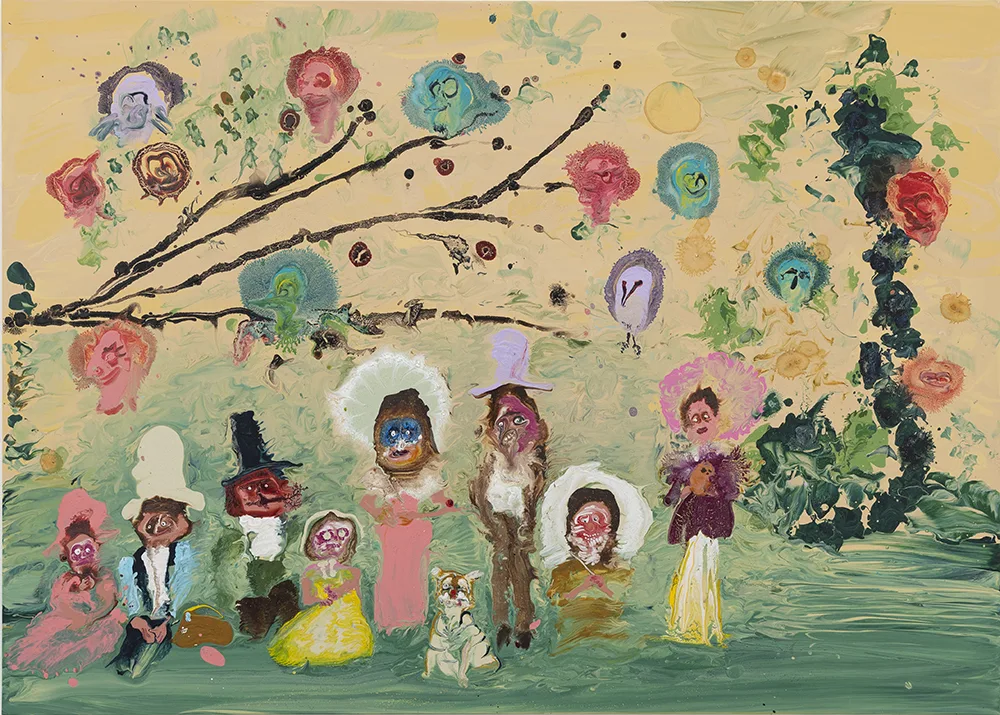
Whether it’s the court of the Tsars, the Tudors or perhaps even the drawing rooms of Bridgerton, Genieve’s imaginary friends are a democracy, despite their noble origins. “I love looking at the pomp and ceremony of royalty. It’s great entertainment in my work I attempt to depict a world of inclusivity.” Growing up in Dublin in the ‘80s, the artist didn’t necessarily feel that sense of inclusion herself. “I did not always feel I had any choices or that I was valued in what I thought or believed.” Ireland at that time was in debt to church and state narratives that undervalued and underinvested in women. Recalling a “dark place with strict rules and high taxes women had no voice, and when they spoke publicly they were ridiculed,” the artist, even as a child, knew how wrong this state of affairs was. It is a feeling that has stayed with her, and today inflects her work.
“The figures are happy,” Genieve says. “Floating in a utopian stage of equality. I attempt to depict a safe environment for them. One that is not confrontational, not racist, not sexist. Everyone is smiling and existing in a much happier place, with much better costumes.” Women have a strong presence in her work, but she also insists that everyone in the paintings is important. In this way, the narrative thread in her works, that connects them to figures from art history, begins to rewrite the past and maybe shape a kinder present. “The world that I attempt to create in my paintings is the Irish reflection, far away in some parallel universe. I endeavour to write them a better portrait.”
